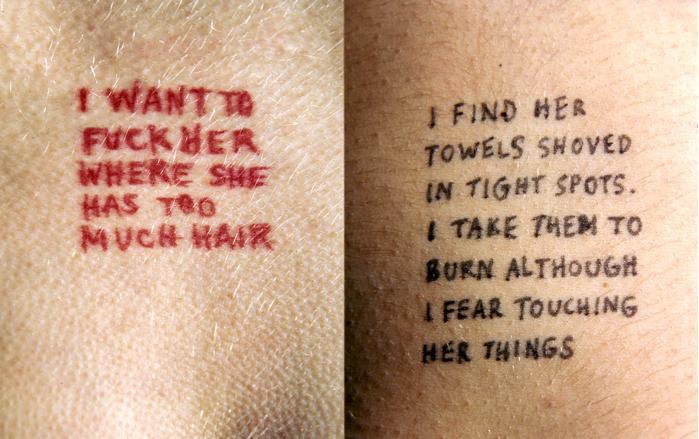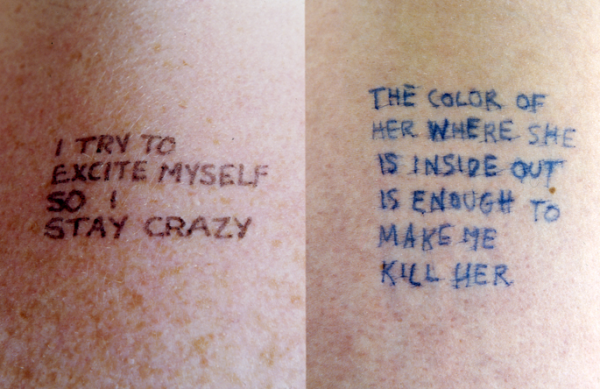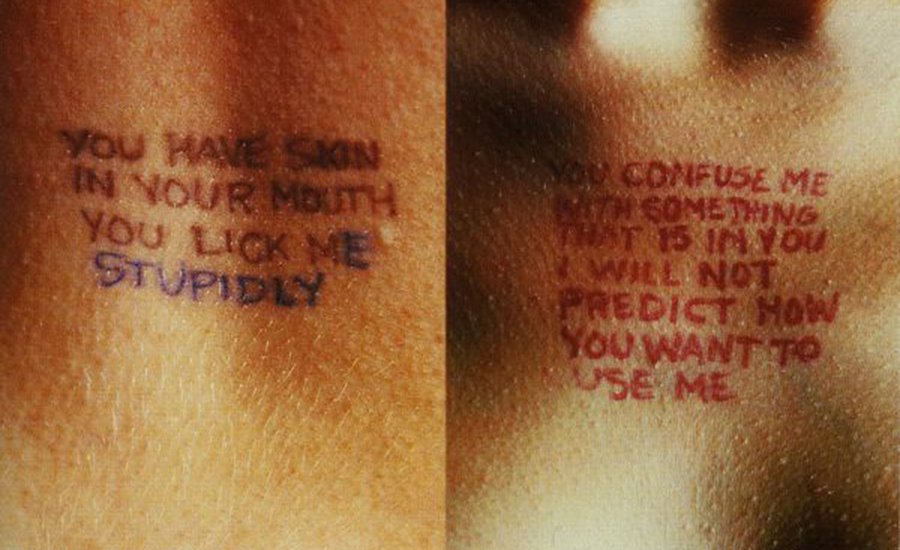In Artspace Magazine 's brand new series, Art in the '90s , we look at the most pivotal works from a decade that is not only having a comeback in contemporary culture, but that paved the way for many multimedia, video, and social practice artists working today. Excerpted from Phaidon's Defining Contemporary Art––25 Years in 200 Pivotal Artworks , the following text written by Swiss art historian Bice Curiger discusses the most pivotal work of 1993, a Jenny Holzer piece that sparked controversy in Germany for all the wrong reasons.
...
In 1976 Jenny Holzer moved to New York to participate in the Whitney Museum’s Independent Study Program. It was there that she began developing the laconic aphorisms that would become her Truisms series (1977-79): "A LITTLE KNOWLEDGE CAN GO A LONG WAY," "ABUSE OF POWER COMES AS NO SURPRISE," "TRUE FREEDOM IS FRIGHTFUL." The texts—253 in all—were printed as posters and pasted up anonymously all over New York City. Written from multiple points of view and often contradictory in nature, the series spawned an abundance of further text-based projects in which Holzer, as the Conceptual artists of the 1960s and 1970s had done before her, generated images out of language.
Like several other female artists who emerged in the 1980s, including Barbara Kruger , Sherrie Levine and Cindy Sherman , Holzer utilizes commercial media in the creation of her art. Her slogans have been printed onto T-shirts, flashed across electronic billboards, and projected onto monuments the world over. After representing the United States at the Venice Biennale in 1990, Holzer took a short break from the art world. Returning in 1993, she took her work into the realm of print journalism and quickly found herself at the center of a firestorm of controversy.
The Süddeutsche Zeitung , Germany’s largest and most respected daily newspaper, invited Holzer to produce a project for its weekend magazine supplement. She responded by creating the most confrontational and provocative intervention of her career. Lustmord (literally, Sex Murder ) was conceived to highlight the systematic rape and murder of women during the Bosnian War, which was raging at the time. Instead of the usual colorful image, the cover of the magazine on November 19, 1993 was left entirely black except for a folded white card printed with the text "DA WO FRAUEN STERBEN BIN ICH HELLWACH" (“I am awake in the place where women die.”) Inside the magazine was a photographic spread comprising thirty images of human skin marked with disquieting handwritten statements. Appearing like tattoos, these texts consisted of quotes relating to the Bosnian atrocities written from three perspectives: the victim’s, the perpetrator’s, and the observer’s. The mixing of viewpoints and the chilling accounts of sexual violence were profoundly unsettling.
 Image via EXHIBITIONFEM
Image via EXHIBITIONFEM
That the project was disseminated outside the art world’s confines was in keeping with Holzer’s previous works, but this time she was able to reach a significantly greater audience—an audience whose reaction turned out to be far from phlegmatic. Yet it was not the graphic descriptions of rape that caused the greatest offense, but rather the fact that the red ink used on the card had been mixed with the blood of Yugoslav women. Despite the fact that the blood was donated and perfectly safe, many readers, along with the German tabloids and the Archbishop of Munich, reacted with outrage, expressing fears of contagion. Holzer’s work was described as perverse, wasteful, and sensationalistic. The irony is that regular news reports of violence against women or wartime bloodshed were being consumed—as they are today—without objection. But when the blood is brought into people’s sitting rooms, they react differently.
 Image via EXHIBITIONFEM
Image via EXHIBITIONFEM
The genesis of Lustmord can be traced back to Holzer’s truisms—“MURDER HAS ITS SEXUAL SIDE”—but the title can also be read as a reference to Weimar Germany’s disturbing and pervasive fascination with the sexually motivated murder of women, as epitomized in the paintings of Otto Dix and George Grosz. Despite the violent public reaction to Lustmord , Holzer tackled the subject again the following year, adding a tabletop element that included metal bands, engraved with the Bosnian testimonies, wrapped around bleached human bones. Holzer’s art has consistently contained a political angle, but in these Lustmord works it became far more overt, indicating a significant shift in her practice and establishing a deeper engagement with culturally and politically sensitive issues.
[related-works-module]






















